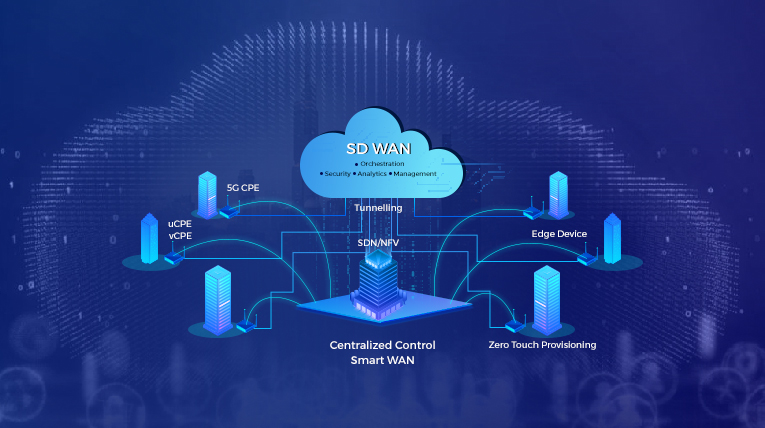In today’s digital-first business environment, reliable network connectivity isn’t a luxury—it’s a necessity. Companies depend on cloud applications, remote collaboration, and data-driven operations that demand always-on, high-performance networks. Traditional WAN (wide-area network) architectures, often reliant on costly MPLS lines and static configurations, simply can’t keep up with modern requirements. That’s where SD-WAN solutions come in.
Software-Defined Wide Area Networking (SD-WAN) has quickly emerged as a transformative technology, providing enterprises with greater reliability, agility, and cost efficiency. By abstracting network control from the underlying hardware, SD-WAN offers centralized management and intelligent traffic routing, all while strengthening resilience. But how exactly do SD-WAN solutions improve network reliability? Let’s take a deep dive.
The Problem with Traditional WANs
Legacy WAN architectures were built in an era when most applications were hosted in corporate data centers. Traffic flowed from branch offices back to a central hub before connecting to external resources. While this setup made sense in the past, it creates significant problems today:
- Single points of failure: If a central MPLS line goes down, entire branch offices may lose connectivity.
- Performance bottlenecks: Backhauling traffic adds unnecessary latency, slowing down cloud-based applications like Microsoft 365, Zoom, or Salesforce.
- Inflexibility: Adding bandwidth or reconfiguring routes requires manual intervention and long lead times.
These issues create vulnerabilities that directly impact business operations. With more organizations relying on cloud services and remote teams, traditional WAN models simply can’t guarantee reliable performance.
How SD-WAN Solutions Enhance Network Reliability
SD-WAN solutions were designed to overcome these challenges by introducing a smarter, software-driven approach to WAN management. Here are the key ways SD-WAN boosts reliability:
1. Intelligent Path Selection
One of the most powerful features of SD-WAN is its ability to dynamically select the best path for traffic based on real-time conditions. Instead of relying on a single MPLS circuit, SD-WAN can leverage multiple transport types—broadband, LTE/5G, and MPLS simultaneously.
- If one link experiences congestion or degradation, traffic is automatically rerouted to the healthiest path.
- This ensures critical applications, such as VoIP and video conferencing, maintain high quality even during outages.
The result is a self-healing network that adapts in real time to maintain optimal performance.
2. Redundancy and Link Aggregation
SD-WAN solutions make it easy to combine multiple internet connections for redundancy. For example, a branch office can run broadband and 5G side by side. If broadband fails, the SD-WAN automatically fails over to 5G—without disrupting user sessions.
Even better, SD-WAN can aggregate bandwidth from multiple circuits, maximizing throughput while maintaining reliability. This redundancy drastically reduces downtime risk and ensures users experience seamless connectivity.
3. Application-Aware Routing
Not all network traffic is created equal. Business-critical applications like ERP platforms or video calls need priority over casual browsing or large file downloads.
SD-WAN solutions use deep packet inspection (DPI) to identify applications and apply policies accordingly. By prioritizing mission-critical traffic, SD-WAN prevents performance issues caused by bandwidth-hungry but non-essential applications.
This level of control ensures the most important business operations always have the bandwidth they need.
4. Centralized Management and Visibility
Another advantage of SD-WAN is centralized orchestration. IT teams can manage policies, monitor performance, and troubleshoot issues across all sites from a single dashboard.
This visibility allows IT staff to identify and resolve potential reliability problems before they impact users. For example, if latency spikes occur on a specific circuit, alerts can trigger automated rerouting, ensuring end users never notice the issue.
5. Secure Connectivity with Built-In Encryption
Security and reliability go hand in hand. A breach or attack can cripple network availability just as easily as an outage. SD-WAN solutions often include built-in security features such as:
- End-to-end encryption
- Next-generation firewalls
- Intrusion prevention systems
By integrating security into the network fabric, SD-WAN reduces the likelihood of downtime caused by cyber threats, further boosting reliability.
Real-World Benefits of Reliable SD-WAN Networks
So how do these features translate into business outcomes? Here are some tangible benefits organizations can expect when deploying SD-WAN solutions:
- Higher uptime: Automatic failover and redundancy minimize service interruptions, keeping employees productive.
- Improved user experience: Cloud applications run smoothly without latency or jitter, supporting collaboration and customer service.
- Faster troubleshooting: Centralized visibility makes it easy to identify and resolve network issues, reducing mean time to repair (MTTR).
- Scalable growth: New branch offices or remote sites can be brought online quickly without complex MPLS provisioning.
Ultimately, SD-WAN creates a resilient foundation for digital transformation.
Comparing SD-WAN Reliability with MPLS
Some businesses hesitate to move away from MPLS because of its reputation for reliability. While MPLS can offer guaranteed SLAs, it’s also expensive and inflexible. SD-WAN provides a more modern approach:
- MPLS: Reliable but costly, with slow provisioning times and limited scalability.
- SD-WAN: Equally reliable (through redundancy and intelligent routing), but far more cost-effective and agile.
By leveraging commodity broadband alongside MPLS or replacing MPLS entirely, SD-WAN delivers both performance and cost savings—without sacrificing reliability.
Industry Use Cases of SD-WAN Solutions
Different industries are embracing SD-WAN for its reliability benefits. Some examples include:
- Retail chains: Ensure point-of-sale systems and customer Wi-Fi stay online across hundreds of branches.
- Healthcare providers: Maintain secure, reliable connectivity for telehealth applications and patient records.
- Financial services: Support latency-sensitive applications like trading platforms while ensuring compliance and uptime.
- Manufacturing: Keep IoT devices and connected machinery running without network disruptions.
In each case, SD-WAN empowers organizations to maintain critical operations, even under network stress.
The Future of Reliable Networking with SD-WAN
As businesses continue migrating workloads to the cloud and embracing hybrid work, reliable connectivity will only grow in importance. SD-WAN is evolving to meet these needs by integrating with newer technologies like:
- SASE (Secure Access Service Edge): Combining SD-WAN with cloud-delivered security for end-to-end reliability.
- AI-driven analytics: Leveraging machine learning to predict and prevent network issues before they occur.
- 5G integration: Using high-speed mobile networks as additional redundant links.
These advancements will push SD-WAN solutions even further, cementing their role as the backbone of modern enterprise networks.
Final Thoughts
Reliability is no longer negotiable in a world where downtime can cost millions in lost productivity and revenue. Traditional WAN architectures simply can’t keep pace with today’s cloud-first, mobile-driven demands.
SD-WAN solutions improve network reliability by delivering intelligent routing, redundancy, centralized visibility, and built-in security. They empower businesses to maintain uptime, enhance user experiences, and scale with agility—all while reducing costs.
For organizations looking to future-proof their networks, SD-WAN isn’t just an option—it’s a necessity.






